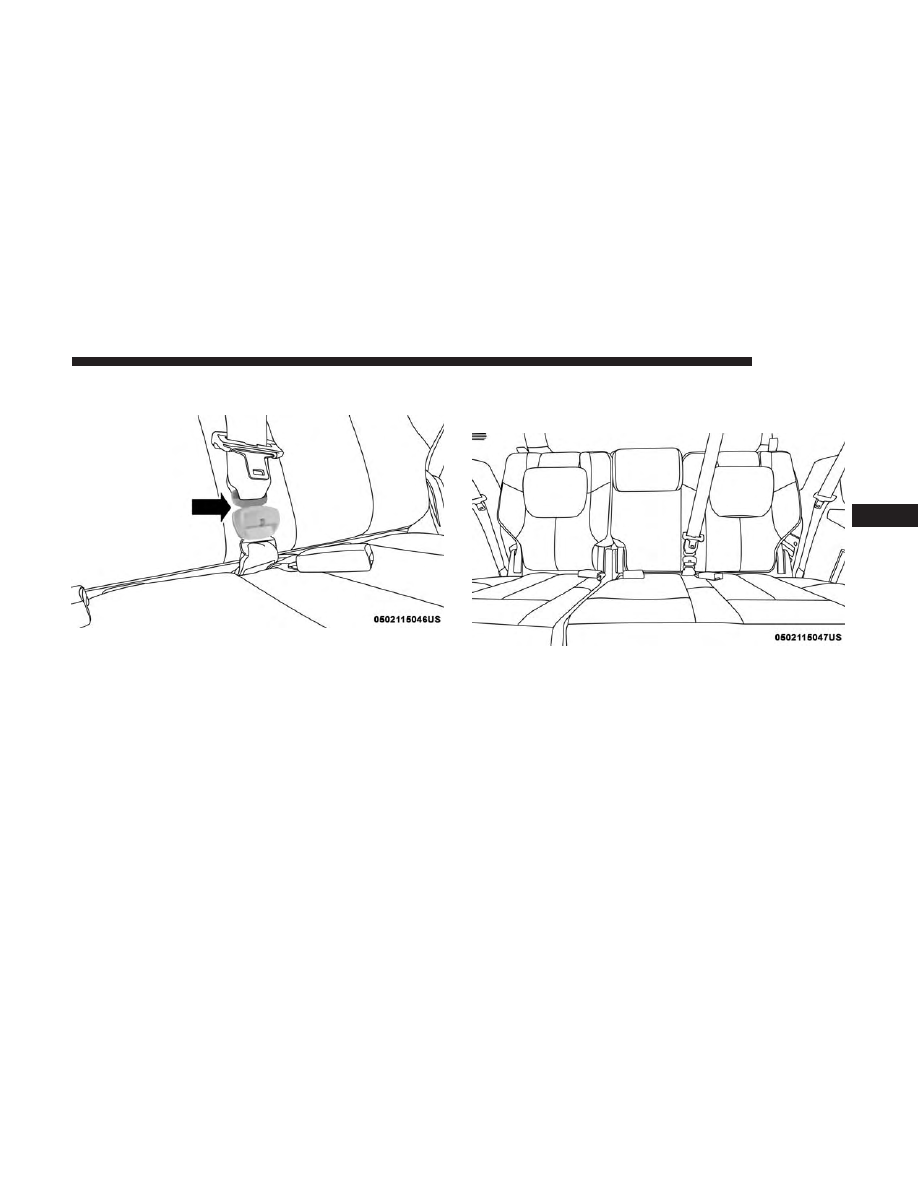Dodge Grand Caravan (2019 year). Manual - part 12

3. Route the shoulder belt to the inside of the left head
restraint.
4. When the seat belt is long enough to fit, insert the
mini-latch plate into the mini-buckle until you hear a
“click.”
Connect Second Row Mini-Latch To Buckle
Second Row Mini-Latch And Buckle Connected
5
SAFETY
189